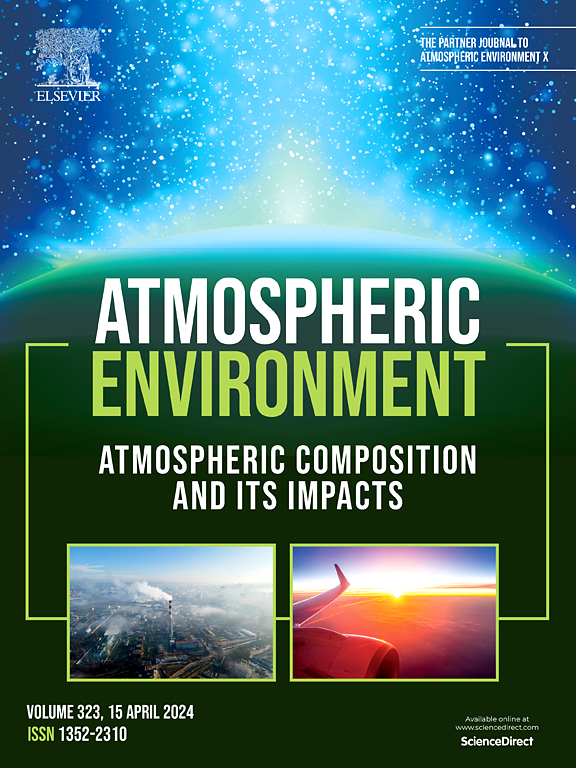Reassessing the missing OH reactivity based on organic molecular formulas: Comparison between urban and regional environments
IF 4.2
2区 环境科学与生态学
Q2 ENVIRONMENTAL SCIENCES
引用次数: 0
Abstract
Closure studies on the total OH reactivity (OHR) are essential for validating comprehensive measurements of reactive volatile organic compounds (VOCs) in various atmospheric environments. Nonetheless, discrepancies persist between measured OHR and calculated OHR in many field observations, primarily due to the presence of unknown VOCs and their reaction rate constants with OH radicals. This study optimized the method for calculating the rate constant (kOH) between isomers by categorization. The missing OH reactivity was reevaluated in an urban and a regional environment based on molecular formula. A notable missing OH reactivity was found during the rush hours in the morning and evening at the urban site, whereas the measured OHR agreed well with the calculated OHR at the regional site. Our analysis revealed that the oxidation products of VOCs significantly contributed to the OHR in highly-oxidizing atmospheres. After adding oxygenated VOCs, a negative correlation between missing OH reactivity and OH exposure was obtained. Finally, we determined the mean kOH values for unknown VOCs to be 9.0 × 10−11 cm3 molecule−1 s−1 at the urban site, respectively. These findings indicate that a comprehensive measurement of oxygenated VOCs can facilitate a comprehensive assessment of reactive VOCs under highly-oxidizing atmospheric conditions.
根据有机分子式重新评估缺失的 OH 反应性:城市环境与区域环境的比较
对于验证各种大气环境中反应性挥发性有机化合物(VOC)的综合测量结果,对总羟基反应性(OHR)进行封闭研究是至关重要的。然而,在许多实地观测中,测量的 OHR 与计算的 OHR 之间仍然存在差异,这主要是由于存在未知的 VOC 及其与 OH 自由基的反应速率常数。本研究通过分类优化了异构体之间速率常数(kOH)的计算方法。根据分子式重新评估了城市和区域环境中缺失的 OH 反应性。在城市环境中,早晚高峰时段会发现明显的缺失 OH 反应性,而在区域环境中,测得的 OHR 与计算得出的 OHR 非常吻合。我们的分析表明,在高度氧化的大气中,挥发性有机化合物的氧化产物对 OHR 起着重要作用。在加入含氧挥发性有机化合物后,缺失的 OH 反应性与 OH 暴露之间呈负相关。最后,我们确定在城市地点,未知挥发性有机化合物的平均 kOH 值分别为 9.0 × 10-11 cm3 molecule-1 s-1。这些研究结果表明,全面测量含氧挥发性有机化合物有助于全面评估高氧化大气条件下的活性挥发性有机化合物。
本文章由计算机程序翻译,如有差异,请以英文原文为准。
求助全文
约1分钟内获得全文
求助全文
来源期刊

Atmospheric Environment
环境科学-环境科学
CiteScore
9.40
自引率
8.00%
发文量
458
审稿时长
53 days
期刊介绍:
Atmospheric Environment has an open access mirror journal Atmospheric Environment: X, sharing the same aims and scope, editorial team, submission system and rigorous peer review.
Atmospheric Environment is the international journal for scientists in different disciplines related to atmospheric composition and its impacts. The journal publishes scientific articles with atmospheric relevance of emissions and depositions of gaseous and particulate compounds, chemical processes and physical effects in the atmosphere, as well as impacts of the changing atmospheric composition on human health, air quality, climate change, and ecosystems.
 求助内容:
求助内容: 应助结果提醒方式:
应助结果提醒方式:


